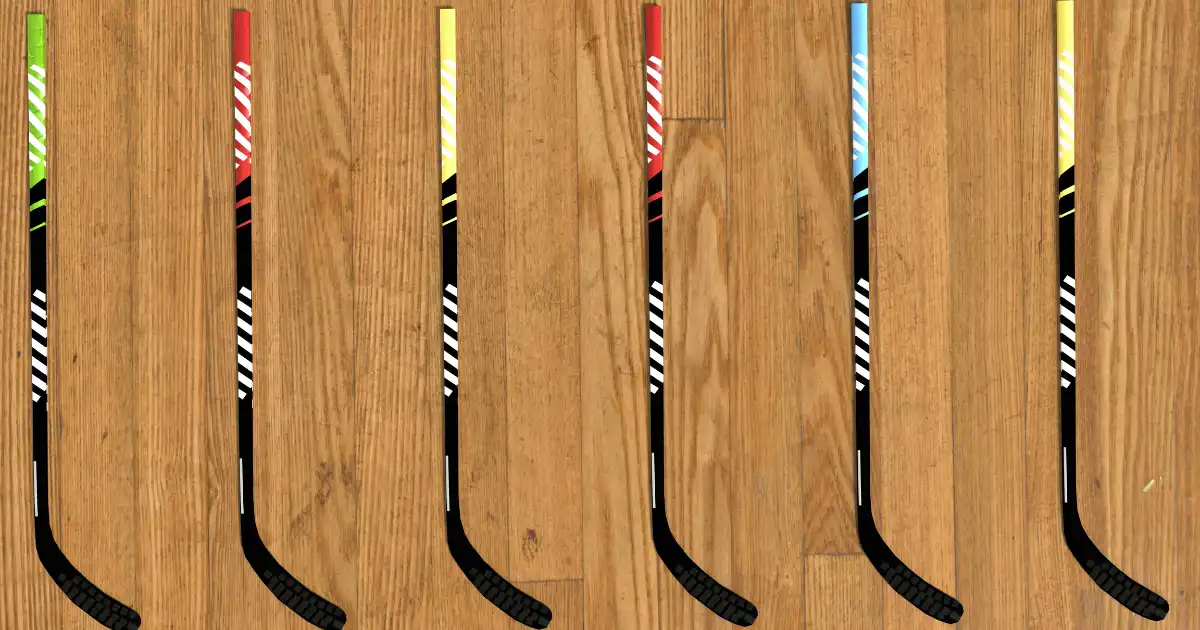If you’ve ever taken a close look at a hockey stick, you know there’s more to it than meets the eye. From the height and curve to the material, every part of a stick is carefully crafted for performance—and regulated to keep the game fair. In this article, we’re breaking down the official rules on hockey stick dimensions, covering length, blade curve, and materials, and exploring how these regulations vary between leagues like the NHL, youth hockey, and international play.
1. Hockey Stick Length Regulations
The length of a hockey stick can influence a player’s reach, power, and control. Here’s a look at the different stick length rules across leagues:
• NHL:
For NHL players, the maximum stick length is 63 inches from the heel to the end of the shaft. Goalies can have a stick length up to 28 inches (measured from the heel to the end of the paddle). There’s also an exemption for players like Zdeno Chara and John Scott, who are taller and need a longer stick. For them, the NHL allows sticks up to 65 inches.
• Youth Hockey:
Youth leagues tend to be more flexible to accommodate growing players. For youth hockey, there aren’t strict maximum lengths, but the general guideline is for the stick to reach somewhere between a player’s chin and nose when they’re standing on skates.
• International (IIHF):
Under IIHF regulations, players’ sticks can be a maximum of 63 inches long. Goalie sticks can be up to 28 inches, aligning closely with NHL standards.
2. Blade Curve Rules
The curve of a hockey stick blade has a major impact on puck handling, shooting, and passing. It can also give players an edge, which is why leagues regulate it:
• NHL:
The NHL has strict rules on blade curve depth, capping it at 3/4 of an inch (measured as the distance between the bottom of the blade and the highest point of the curve). If a player’s blade exceeds this limit, they could face a minor penalty or, in extreme cases, suspension.
• Youth Hockey:
In youth hockey, the curve restrictions are typically similar to the NHL’s, with 1/2 to 3/4-inch curves often considered acceptable. Since the focus in youth leagues is on developing skills over maximizing power, coaches often encourage young players to use more moderate curves.
• International (IIHF):
The IIHF limits blade curves to 1/2 inch, slightly less than the NHL’s allowance. This is meant to keep the playing field even across various international players and playing styles.
3. Material Regulations
Hockey stick materials have come a long way—from traditional wood to modern composites. The materials used in sticks can affect everything from durability to flexibility, and different leagues have specific standards:
• NHL:
Players use composite materials, like carbon fiber and fiberglass, due to their lightweight properties and high performance. Wooden sticks are allowed but rare in the NHL today. The league’s regulations focus less on the materials themselves and more on the dimensions and safety standards.
• Youth Hockey:
Youth hockey sticks are made from similar materials as pro-level sticks, though typically they’re a bit more affordable and durable for young players. While there are no specific restrictions on materials, many youth leagues encourage wood or durable composite sticks for beginners to balance cost and durability.
• International (IIHF):
IIHF regulations allow players to use composite materials but also permit wood sticks. The emphasis is more on blade curve and length than on material composition, allowing flexibility for players to choose their preference.
4. Other Notable Rules and Differences
Aside from the primary regulations on length, blade curve, and materials, here are a few additional points:
• Tape and Wax:
Players often tape their sticks for added grip and protection. NHL and international leagues allow tape and wax applications as long as they don’t alter the stick’s dimensions.
• Illegal Sticks and Penalties:
Using an illegal stick (one that doesn’t meet regulation) can result in penalties. In the NHL, players caught with illegal sticks can face a minor penalty, while in international play, stricter consequences may apply.
Why These Rules Matter
The regulations on hockey sticks are in place to ensure that the game remains fair and competitive. A larger curve or longer stick could give a player an unfair advantage, affecting puck handling, shooting power, and reach. These rules also help prevent injuries by ensuring that players use equipment suited to their level of play.
Whether you’re watching the NHL, cheering at a youth game, or following an international tournament, these rules are essential to maintaining balance and integrity in hockey. So, next time you pick up a stick, remember—it’s more than just equipment; it’s a finely tuned tool that has to play by the rules!
Understanding these regulations can help players choose the right stick for their level and style, giving them confidence on the ice and keeping the competition level. Stick to the rules, and let your skills take you to the next level!
#HockeyRules #StickToTheGame

